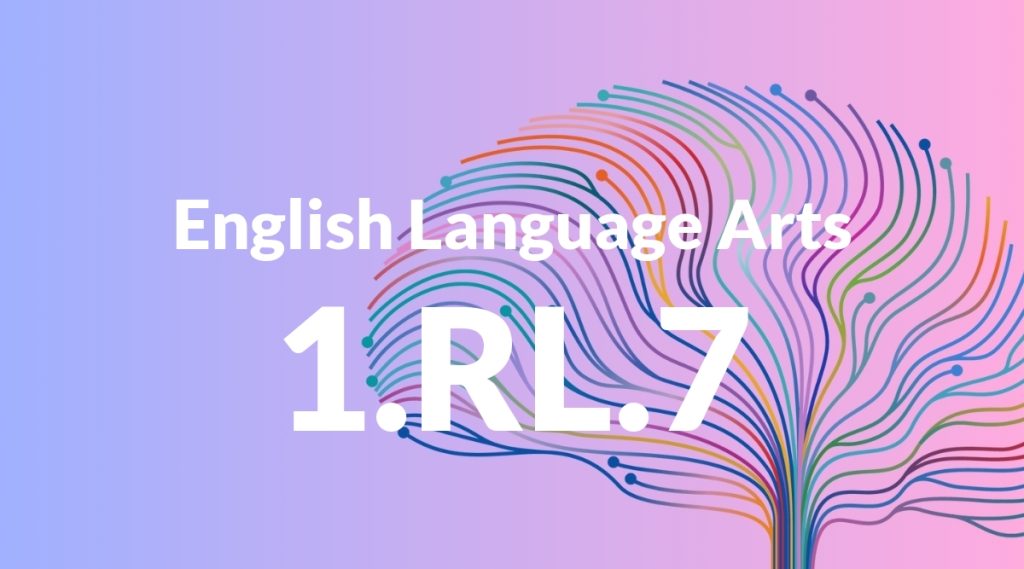Standard: 1.RL.7 – Use illustrations and details in a story to describe its characters, setting, or events.
Grade level: Grade 1
Subject: English Language Arts
Domain: Reading: Literature
Teacher Overview
This standard emphasizes the importance of using illustrations and textual details to understand and describe characters, settings, and events in a story. It is crucial for developing students’ comprehension skills and their ability to analyze and interpret visual and textual information. Students should be able to identify basic story elements and describe details in illustrations. They should also have some experience with picture books.
Students will progress to analyzing more complex texts, making inferences, and understanding the interplay between text and illustrations in conveying a story’s meaning.
Common Misconception 1
Some students may think that illustrations are just for decoration and do not contribute to the story. This is incorrect because illustrations can provide additional context and details that enhance the reader’s understanding of the story.
Intervention 1
Use guided reading sessions to point out how illustrations add to the story. Ask students questions about what they see in the pictures and how it relates to the text.
Common Misconception 2
Another common misconception is that the text alone tells the whole story. This is incorrect because illustrations often provide important details that are not mentioned in the text, helping to create a fuller understanding of the story.
Intervention 2
Present stories where key details are conveyed through illustrations. Have students describe what they see and how it adds to their understanding of the story.
Prerequisite Knowledge
Students should be familiar with basic story elements such as characters, settings, and events. They should also have experience with picture books and be able to recognize and describe simple details in illustrations.
Subsequent Knowledge
After mastering this standard, students will be able to analyze more complex texts, make inferences based on illustrations and text details, and understand the deeper connections between story elements.
Instructional Activities
- Read aloud a picture book and discuss the illustrations.
- Have students draw scenes from a story and describe them.
- Create a class storyboard for a story read in class.
- Use picture cards to retell a story.
- Pair students to discuss the details in illustrations and how they relate to the text.




